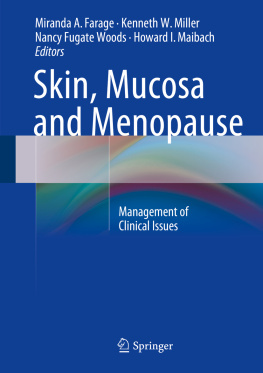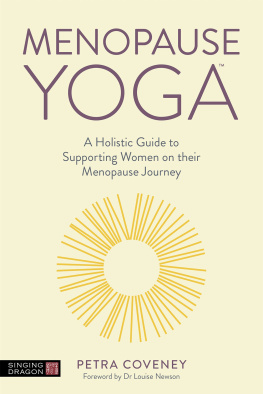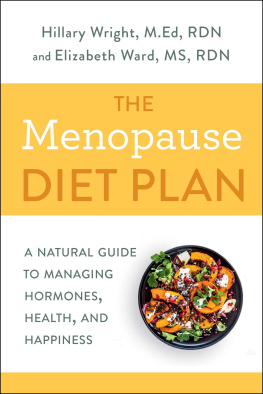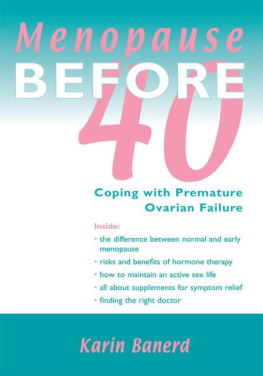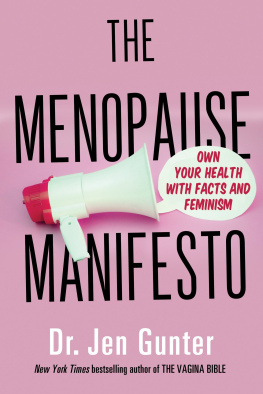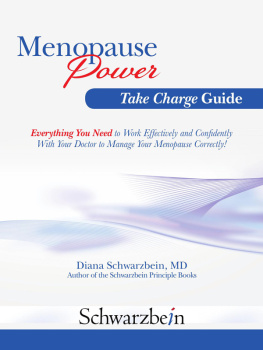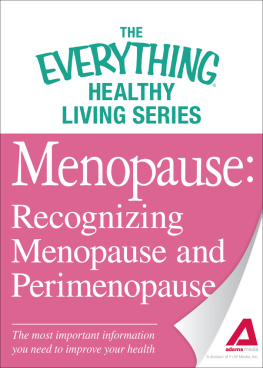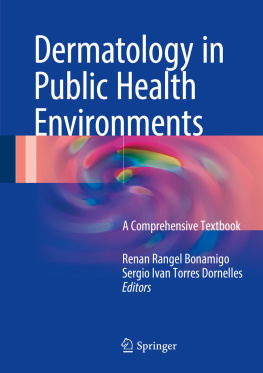1.1 Introduction
The extension of life and population aging are world-changing events that will have profound impacts on generations to come. In 1990 there were an estimated 467 million women aged 50 years and over in the world. This number is expected to increase to 1,200 million by the year 2030 []. But if the extension of life achieved in the coming decades can be converted into healthy productive years, then these challenges could be counterbalanced by an equal measure of opportunity and the emergence of a dynamic and equitable aging society.
Because the loss of ovarian function has profound impact on the hormonal milieu in women and on the subsequent risk for the development of disease via the loss of estrogen production, improving our understanding of reproductive aging is critical to care for all women.
1.2 Definitions: Terminology
Reproductive aging is a continuum beginning in utero and ending with menopause. The stages along this continuum have been difficult to define. Numerous terms have been used clinically, including perimenopause, menopausal transition, climacteric, menopause, and postmenopause, to describe the various nodal points surrounding the menopause. In 1980, a WHO Scientific Group on Research on the Menopause proposed some definitions, in order to be used in studies and reports on the menopause and to extract comparable findings, and there are shown in Fig. ].
Fig. 1.1
Relationship between different time periods surrounding the menopause. (Reproduced, with permission of the publisher, from World Health Organization Scientific Group. Research on the menopause in the 1990s [])
1.2.1 Menopause
Menopause is the most identifiable event of the perimenopausal period and should be characterized as an event rather than a period of time. The most widely used definition for natural menopause is as defined by the World Health Organization as at least 12 consecutive months of amenorrhea not because of surgery or other obvious causes []. When referring to menopausal age or onset of menopause in this chapter, we mean natural menopause as defined above. This cessation of menses resulting from the loss of ovarian function is a natural event, a part of the normal process of aging, and is physiologically correlated with the decline in estrogen production resulting from the loss of ovarian follicular function and therefore represents the end of a womans reproductive life.
1.2.2 Perimenopause
The perimenopausal period includes the time before, during, and after menopause, when the endocrinological, biological, and clinical features of approaching menopause commence. The years immediately preceeding and the decades afterward, however, are of far greater clinical significance. The length of this period varies, but it is usually considered to last approximately 7 years, beginning with the decline in ovarian function in a womans 40s and continuing until she has not had a menstrual period for 1 year []. Perimenopause usually begins in the mid- to late 40s; it is often uneventful but may be abrupt and symptomatic. The term climacteric should be abandoned to avoid confusion. Symptoms that begin with the menopausal transition usually continue into the postmenopausal period.
1.2.3 Menopausal Transition
The period of hormonal transition that precedes menopause is sometimes known as the menopausal transition period and is characterized by a varying degree of somatic changes that reflect alterations in the normal functioning of the ovary. Early recognition of the symptoms and the use of appropriate screening tests can minimize the impact of this potentially disruptive period []. In many cases, however, it is difficult to differentiate stress-related symptoms from those associated with decreasing levels of estrogen. For this reason, both stress and relative estrogen deficiency should be considered when managing problems associated with the menopausal transition.
In some women, menstrual irregularity is the most significant symptom of the menopausal transition [].
1.2.4 Postmenopausal Period
The postmenopausal period is one of relative ovarian quiescence following menopause []. Given the current lifespan of women in the United States, this period can comprise more than one-third of the average womans life. During this prolonged period, women are susceptible to health problems associated with estrogen deficiency that tend to be chronic rather than acute. First of all osteoporosis is not clinically apparent until decades after menopause, when unfortunately it becomes harder to treat. Additionally, the impact of estrogen deficiency on cardiovascular disease is often confused with age-related changes, while, because of the peripheral conversion of both ovarian and adrenal androgens to estrogen, the loss of ovarian function does not result in an acute estrogen deficiency in all women.
1.2.5 Time of Natural Menopause
Natural menopause occurs at a median age of 51.4 years and is more or less normally distributed with a range roughly between 42 and 58 years []. However, there is no way to predict when an individual woman will have menopause or begin having symptoms suggestive of menopause. The average age of menopause has remained invariable during the last decades.
Environmental factors explain only a small part of the age variance at which menopause commences [].
1.2.6 Induced Menopause
There are some medical and surgical conditions that can influence the timing of menopause. The term induced menopause is defined as the cessation of menstruation which follows either surgical removal of both ovaries or iatrogenic ablation of ovarian function by chemotherapy or radiation.
1.2.6.1 Surgical Menopause
It is called the surgical removal of the ovaries (oophorectomy) throughout reproductive period and results in an immediate cessation of estrogen production. In more than 40 % of women who have hysterectomies, both ovaries are removed, and this is usually performed at a significantly younger age than the age of natural menopause. In this case, there is no perimenopause, and after surgery, hot flashes and other acute symptoms associated with the perimenopausal period often become especially intense [, which are not therefore associated with the cessation of menstruation.
1.2.6.2 Cancer Chemotherapy and Radiation Therapy
Chemotherapy and/or radiation therapy in a woman of reproductive age can result in menopause. The effect of such a treatment on ovarian function is directly depended on the type and location of the cancer as well as the toxicity of the medications used []. In this case, the symptoms of menopause may begin during the cancer treatment or may develop in the months following the treatment, independently of the womans age.

